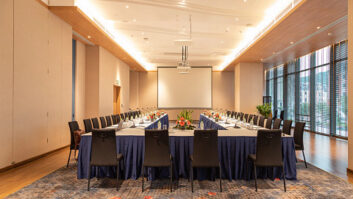
The further you send a signal down a cable, the higher the loss in quality. Ian Trudgeon of thinkingbricks looks at why it makes sense to opt for star wiring in the home.
Cabling for the variety of essential and non-essential services a homeowner now expects is a complex business. A little thought at the design stages of the project, along with a clear understanding of what the client wants now and what they may need in the future goes a very long way…not some thing that can be said for the signals in a cable.
Basic physics dictates that the further you send the signal down the cable, the higher the loss in quality. A key rule is to keep the runs of cable as short as possible for just this very reason.
By star wiring (or hub wiring) from and to a centralised location in the building, the cables run shorter distances than the common daisy-chain cabling in older properties.
Star wiring also offers greater flexibility – the connections to each room can be configured from the hub area, much like an old fashioned telephone exchange. By patching connections from a central patch panel to the relevant sockets out in the rooms – your client can change the types of signal being sent to any room. The play room that becomes the study can be patched for broadband and telephone, or signals such as HD video can be sent from the hub to that new TV in the snug.
We have seen a marked increase in the number of power sockets laid out in main rooms over the years, which is not the same for TV, phone, broadband, or other entertainment points. A little thought in the electrical layout stages of a project can really add to where and how the client can connect, conveniently, with the technology they want.
Ian Trudgeon is project director with thinkingbricks. He is offering RIBA-certified CPD courses on all aspects of home technology.







